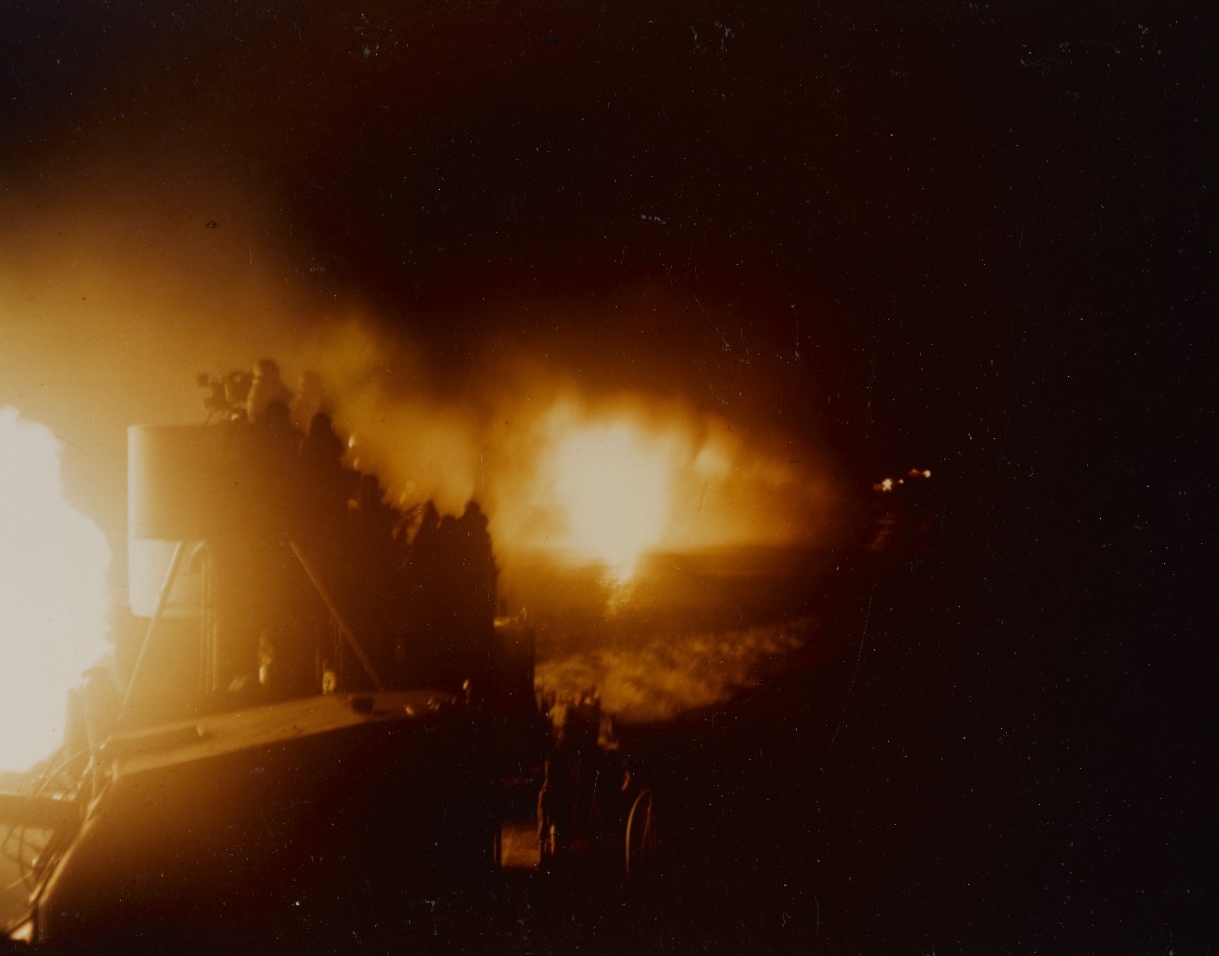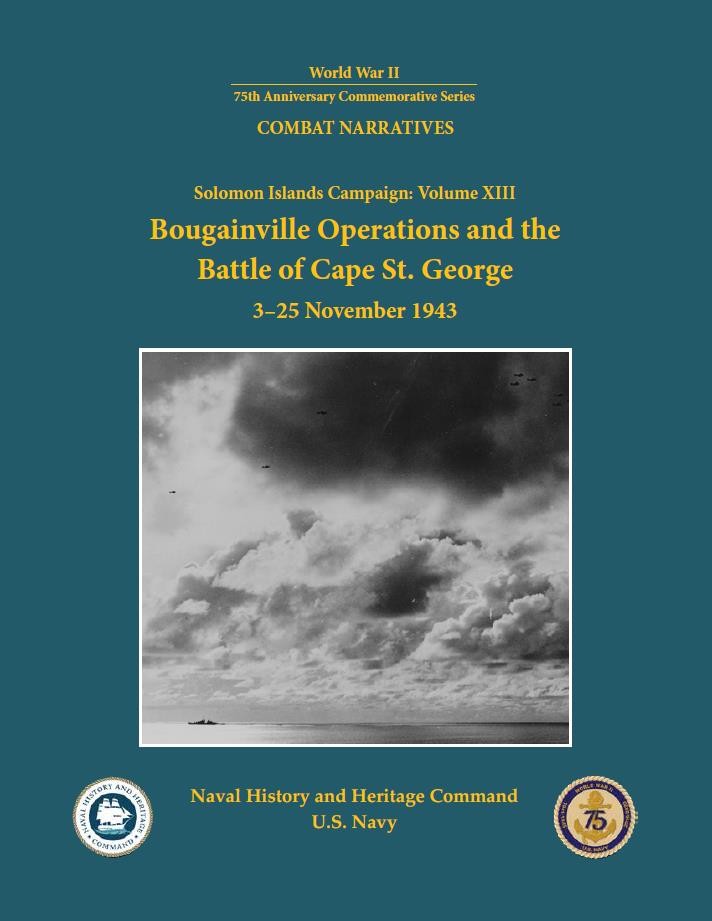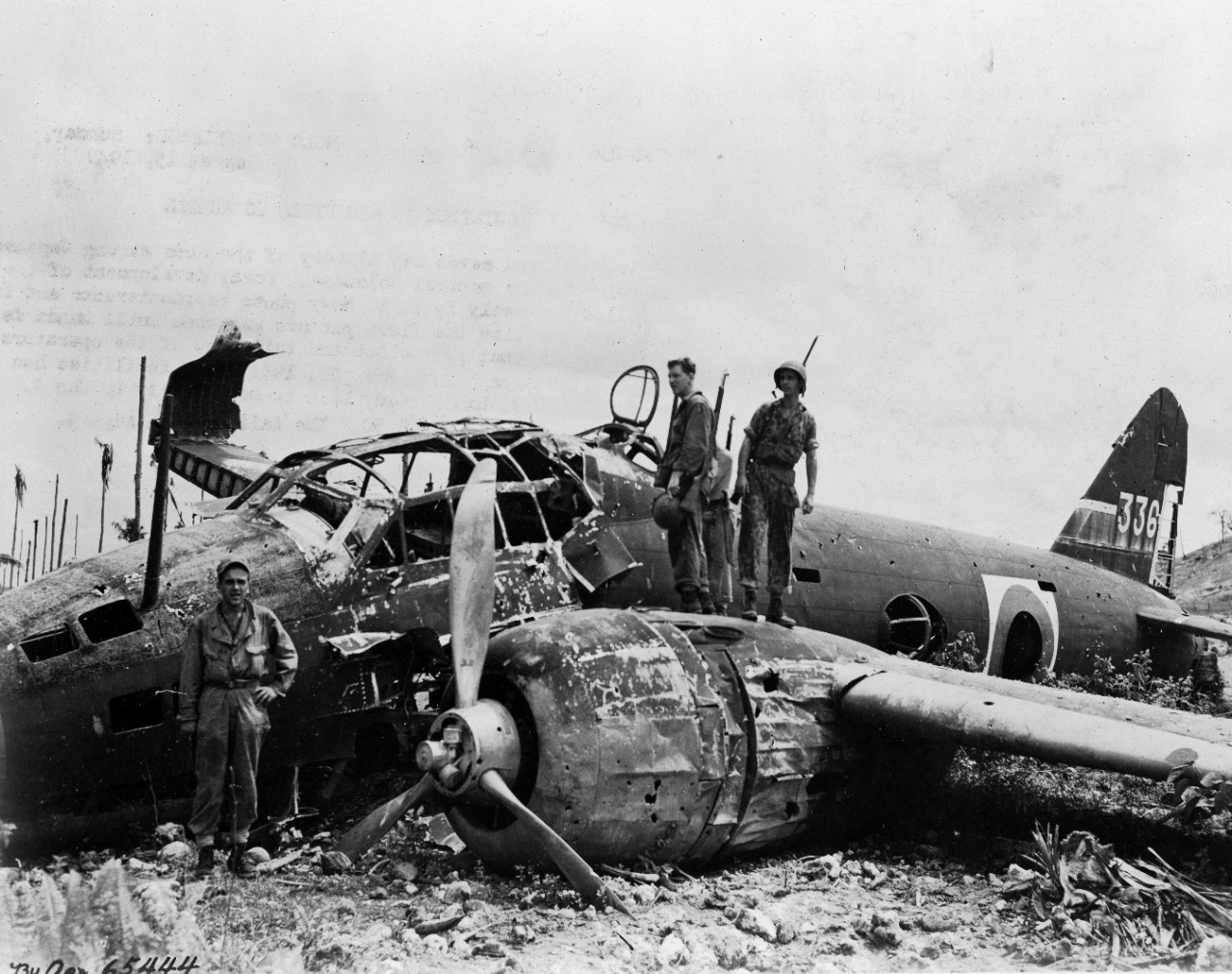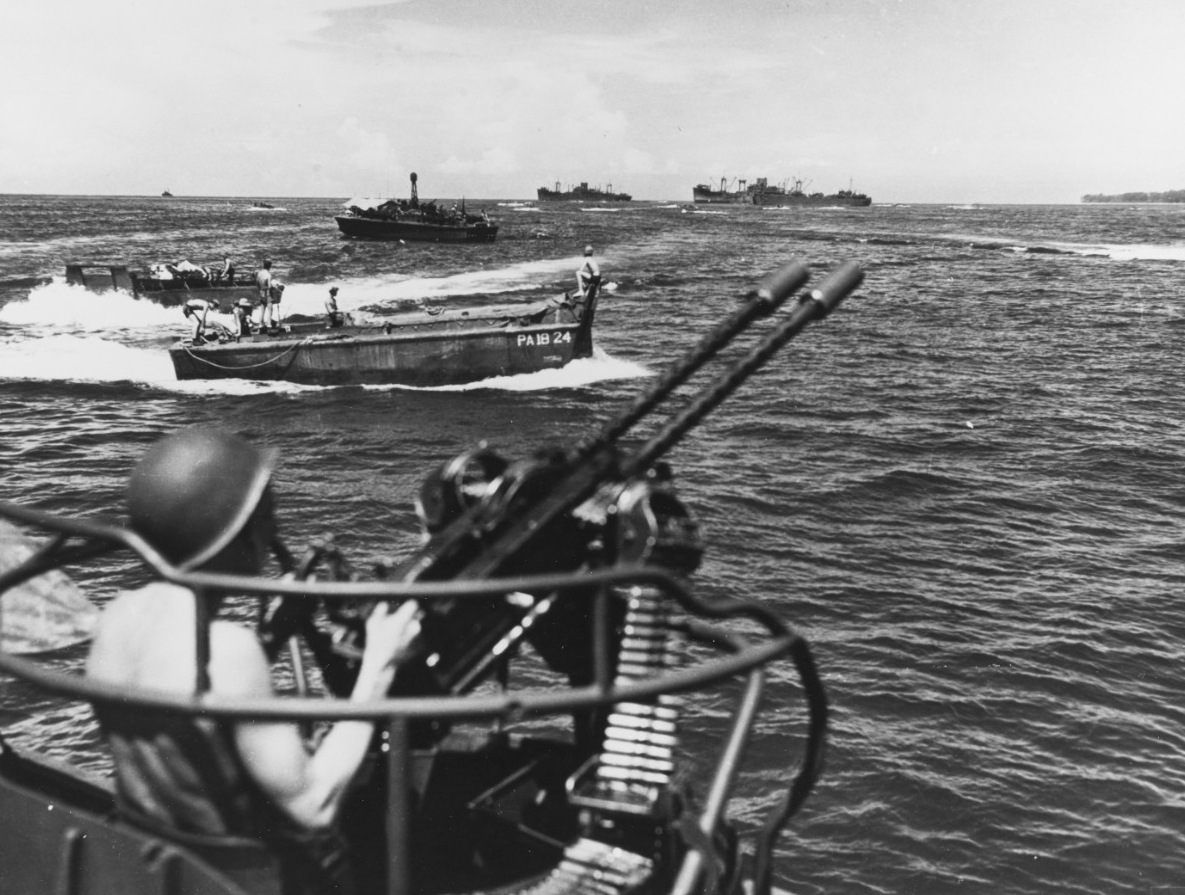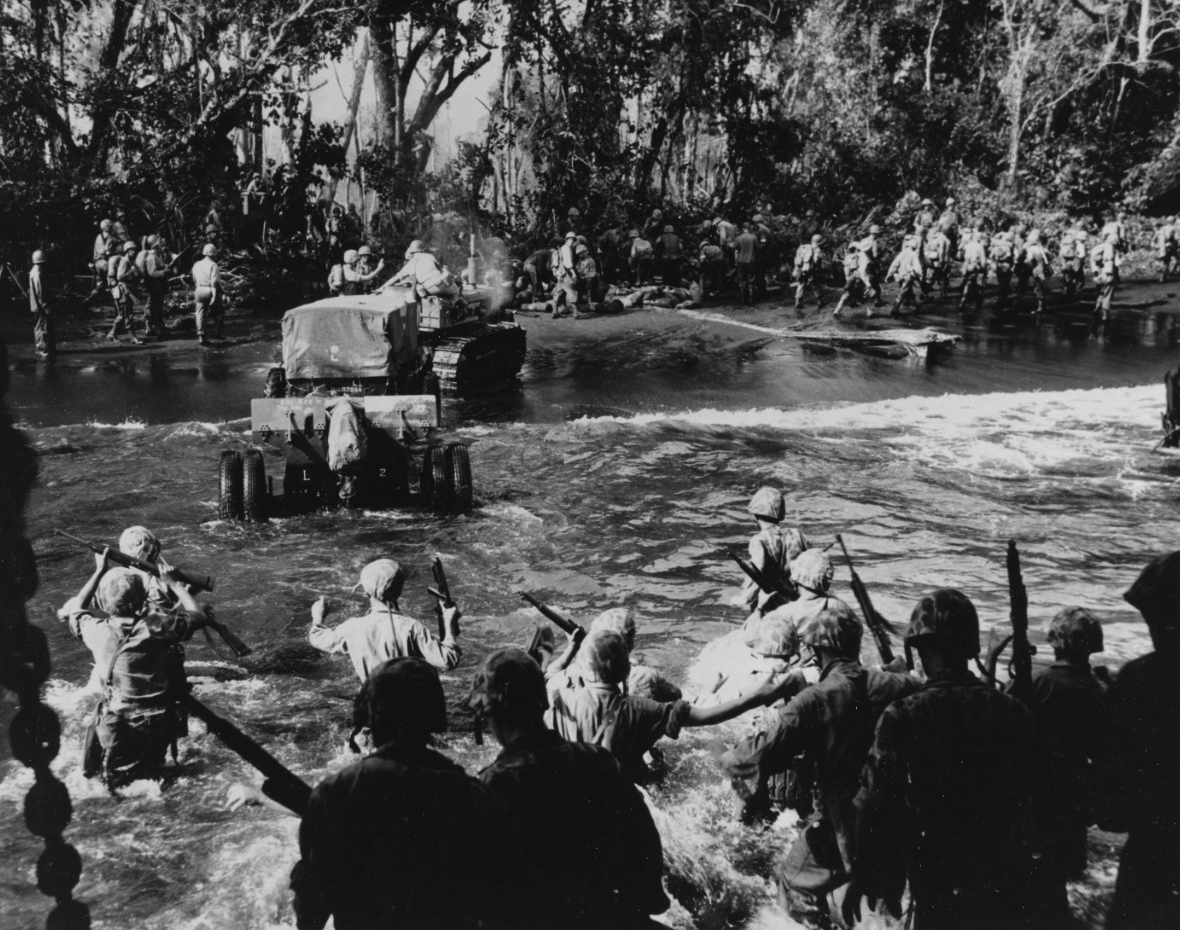On the Offensive Beyond Guadalcanal
March–December 1943
Overview
Following the Guadalcanal campaign, U.S.—and Allied—strategy in the southwestern Pacific focused on the encirclement and eventual capture of the major Japanese base at Rabaul on New Britain. As a consequence, Operation Cartwheel was adopted. Cartwheel was based on early 1943 planning initiatives by the staff of General Douglas McArthur, supreme Allied commander, South West Pacific Area, who also directed the overall operation. The two primary elements of Cartwheel were the Allied capture of northeastern New Guinea and a concurrent advance up the central and northern Solomon Islands to New Britain by Admiral William F. Halsey Jr.’s predominantly naval forces.
At the 17–24 August 1943 Allied Quadrant Conference in Quebec, the decision was made to isolate and bypass Rabaul rather than capturing it. However, Cartwheel had a significant impact on Japanese forward defenses, logistics, and communications. It also set the stage for the Allied advance beyond New Guinea toward the Philippines, and the U.S. operations against the Japanese-occupied island groups in the central Pacific.
The following major subordinate operations of the multipronged Cartwheel were executed by the end of 1943.
As a continuation of the Solomons campaign:
- The New Georgia campaign (Operation Toenails), began on 30 June 1943. In the first such interoperability arrangement in the Pacific, the Royal Navy carrier HMS Victorious joined USS Saratoga (CV-3) in providing naval air cover for the amphibious landings on New Georgia. Naval surface actions associated with campaign were the Battle of Kula Gulf (5–6 July), the Battle of Kolombangara (12–13 July), and the Battle of Vella Gulf (6–7 August).
- Landings on Vella Lavella, 15 August 1943. The Battle of Vella LaVella, the last naval battle in the central Solomons, took place during the night of 6–7 October, just as the island had been secured.
- The Bougainville campaign (Operation Cherryblossom), began on 1 November 1943. Japanese naval forces attempted to attack Allied invasion shipping in the Battle of Empress Augusta Bay on 1–2 November. During the 25 November Battle of Cape St. George, U.S. naval forces commanded by then-Captain Arleigh A. Burke intercepted Japanese destroyers carrying reinforcements for the Bougainville garrison.
- Landings on New Britain (Operation Dexterity), on 15 and 26 December 1943, and 2 January 1944.
As a continuation of the New Guinea campaign:
- U.S. Army landings on Woodlark Island and Kiriwina (Operation Chronicle), 30 June 1943
- U.S. Army (airborne assault) and Australian capture of Lae, New Guinea (Operation Postern), 5 September 1943
- Landing of New Zealand forces on the Treasury Islands (Operation Goodtime), 27 October 1943
- 1st Marine Division landing at Cape Gloucester, New Britain (Operation Backhander), 26 December 1943
References
Robert J. Cressman, The Official Chronology of the U.S. Navy in World War II. Annapolis, MD/Washington, DC: Naval Institute Press/Naval Historical Center, 1999.
Samuel Eliot Morison, History of United States Naval Operations in World War II, Vol. VI—Breaking the Bismarcks Barrier, 22 July 1942–1 May 1944; and Vol. VII—Aleutians, Gilberts and Marshalls, June 1942–April 1944. Boston, MA: Little, Brown and Company, 1950 and 1951.
Imagery and Combat Art
Follow a 6 March 1943 night surface action on unique radarscope photographs
Operations in the Central and Northern Solomons
Related Topics and Documents
NHHC Director's H-Gram 018-2: Operation Vengeance—Admiral Yamamoto Shot Down, 18 April 1943
Lieutenant Junior Grade John F. Kennedy, USNR, and PT-109 at New Georgia, 1–2 August 1943
Navy Department Communiqués 301–600 and Pacific Fleet Communiqués, 6 March 1943–24 May 1945
Operations of the Seventh Amphibious Force—Part One: 30 June 1943–2 January 1944
Seventh Amphibious Force Command History, 10 January 1943–23 December 1945

